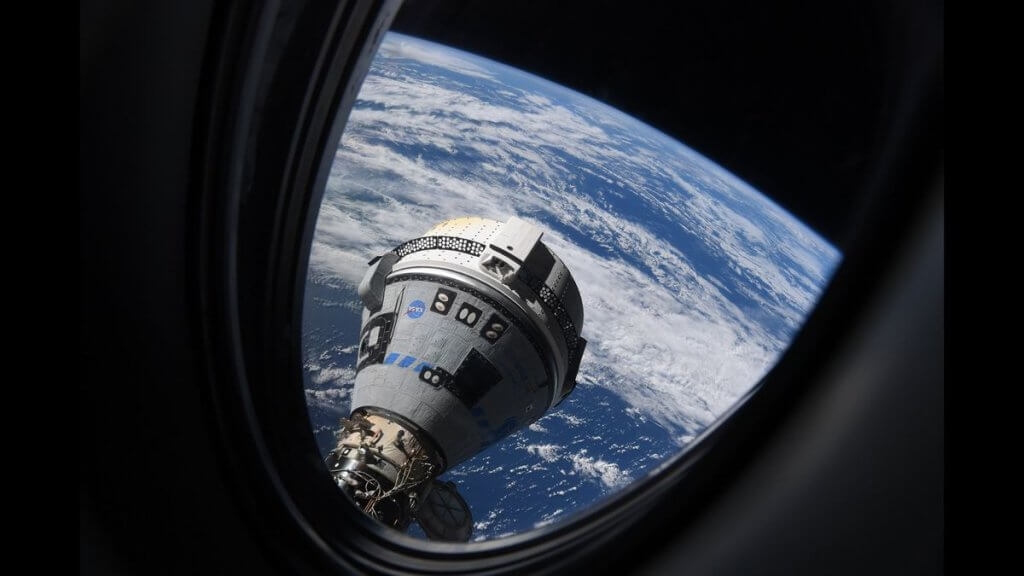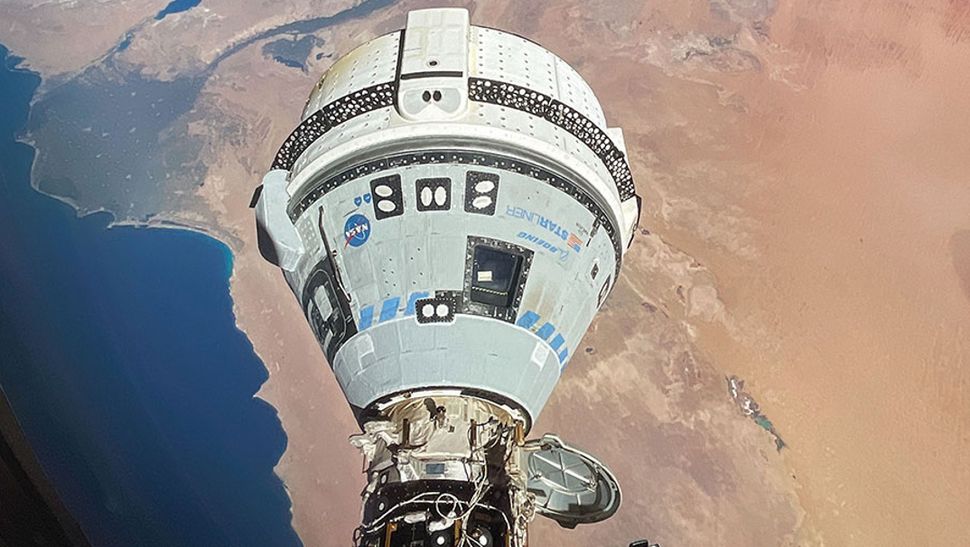
Boeing’s Starliner can stay in space beyond 45-day limit, NASA says (Image Credit: Space.com)
Boeing’s Starliner capsule is performing well enough on its first-ever astronaut mission that it will likely be able to stay in orbit beyond the initially envisioned 45-day limit, NASA says.
Starliner, which launched on June 5, is docked at the International Space Station (ISS) on an indefinite mission extension. The spacecraft is in good shape and rated to leave the ISS in case of emergency. But both NASA and Boeing are trying to understand why some of Starliner’s reaction control system (RCS) thrusters experienced issues in the leadup to docking with the ISS on June 6, and why several helium leaks have sprung up in the capsule. As such, Starliner will stay in space until at least later in the summer as testing and analyses continue. For example, a new round of thruster tests on the ground will begin soon, perhaps as early as today (July 2).
Testing on June 15 in orbit was unable to find the root cause of the issues, although agency officials stressed on Friday (June 28) that progress has been made: the helium leaks have stabilized, and all but one of the errant thrusters is rated for use to come back to Earth. (Starliner has 28 thrusters altogether in its RCS; five were misbehaving, and of those five, only one will be taken offline during undocking.)
Since the RCS is in Starliner’s service module, which will be jettisoned before entry, descent and landing, the extra time in orbit will let teams take their time in understanding how to proceed. This will be crucial for any service module design changes that will be needed for future, six-month ISS rotation missions that Starliner performs as soon as 2025. But to give ground teams time for testing, NASA says Starliner needs to stay docked for more than 45 days, which was the initial outside limit for this mission. The good news is the spacecraft looks good to go for perhaps double that amount of time — or more.
“We talked about a 45-day limit, limited by the crew module batteries on Starliner, and we’re in the process of updating that limit,” Steve Stich, manager of NASA’s Commercial Crew Program, told reporters during the Friday teleconference.
“We’ve been looking at those batteries and their performance on orbit. They’re getting recharged by station, and that risk hasn’t really changed. So the risk for the next 45 days is essentially the same as the first 45 days,” he said.
Starliner, in fact, is rated to stay as long as 210 days on orbit once operational missions begin, he pointed out. But, as this is only Starliner’s third mission in space, and its first with astronauts, NASA had been unsure about the battery performance in orbit before now.
When Space.com asked how long the mission could continue, Stich said, “We haven’t decided how long to extend it yet.” Starliner has 12 different batteries, he explained. Before this flight, similar batteries sat on the ground for a year and were then tested to make sure there were no defects, and none were found.
“What we really are doing now is looking at the performance of the battery in flight. We don’t see any degradation in any of the cells where the batteries are,” he added.

The current Starliner mission, called Crew Flight Test (CFT), was originally supposed to last about 10 days. It features two NASA astronauts: Butch Wilmore and Suni Williams. Both are former U.S. Navy test pilots with decades of experience working in developmental missions like this spaceflight.
Wilmore told Space.com on May 1, prior to launch, that the Navy gave the astronauts skills highly relevant to CFT, such as testing how systems work together. “Well, goodness, that’s really the reason that we are here,” he said, reflecting on the duo’s thousands of hours of piloting experience. Later, he added their experience has been “invaluable for the process” in working on Starliner.
CFT was meant to examine the unexpected in space, and has flexibility built into it in terms of scheduling. The extra ground testing will be performed at the White Sands Test Facility in New Mexico to attempt to duplicate how the RCS thrusters were used during the flight and especially during the docking. (NASA waved off the first docking attempt on June 6 but authorized the second one a few hours later.)
Williams and Wilmore, meanwhile, are supporting the ISS astronauts on other tasks while standing by for the results of the White Sands testing, which will take no less than two weeks. Recent NASA blog posts have detailed the CFT astronauts’ work on ISS maintenance: orbital plumbing for a few days, then more recently organizing items in the Permanent Multipurpose Module.
Williams and Wilmore also worked in the Japanese Experiment Module on Monday (July 1) “to disassemble an empty NanoRacks CubeSat Deployer in preparation of upcoming NanoRacks missions,” NASA officials wrote Monday (July 1.)
Starliner’s first two space missions were uncrewed. The first, in December 2019, failed to reach the ISS due to computer glitches that stranded it in the wrong orbit. The second, in May 2022, reached the ISS safely after Boeing made dozens of fixes, but Starliner’s thrusters experienced a few issues; that’s another reason NASA and Boeing are taking their time with CFT’s return, to see why the spacecraft’s thrusters misbehaved in both 2022 and 2024.
Boeing is one of two suppliers for ISS astronaut missions, with the other being SpaceX. Elon Musk’s company uses its Crew Dragon capsule, which is based on the SpaceX’s cargo Dragon vehicle. Crew Dragon had a more rapid path to orbit: one uncrewed mission in 2019, followed by an astronaut flight test in 2020. Dragon has sent 11 crews to the ISS since then, most of them on six-month operational crew rotation missions for NASA.





